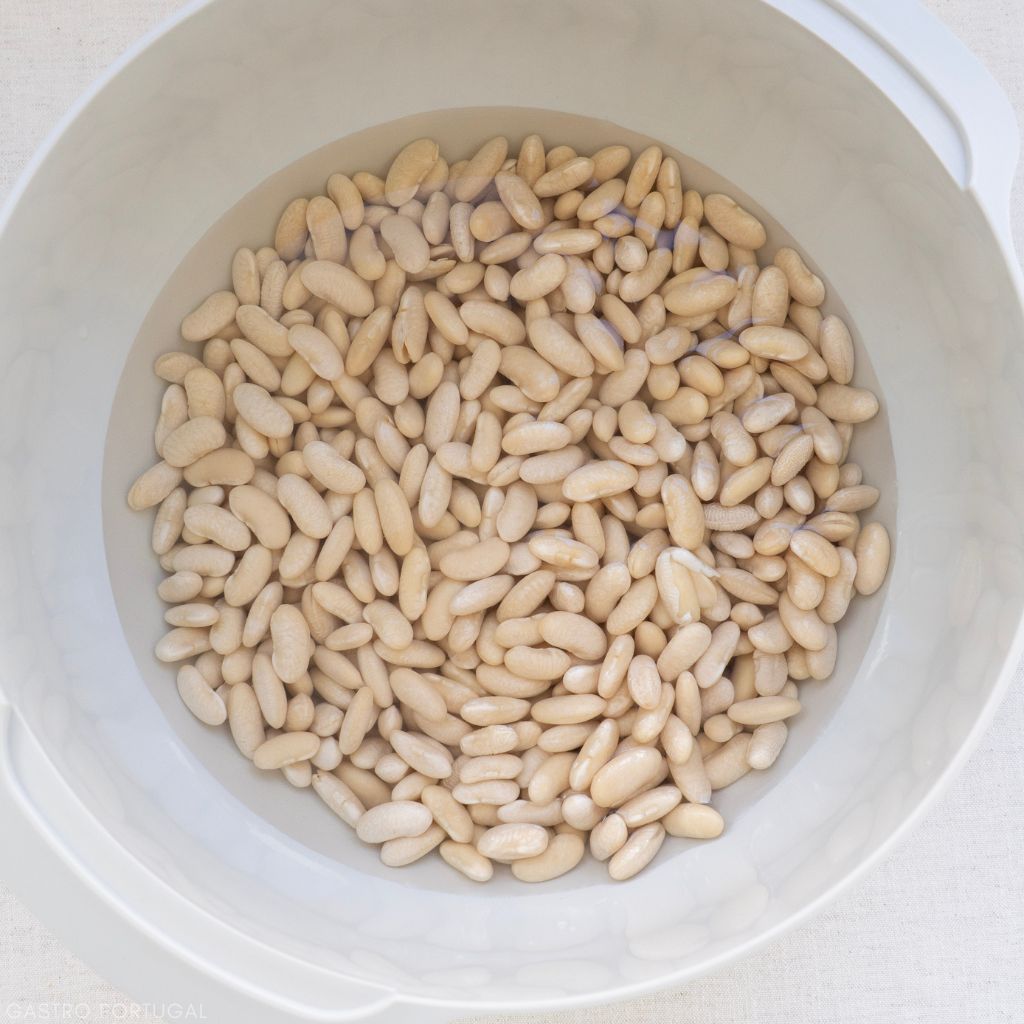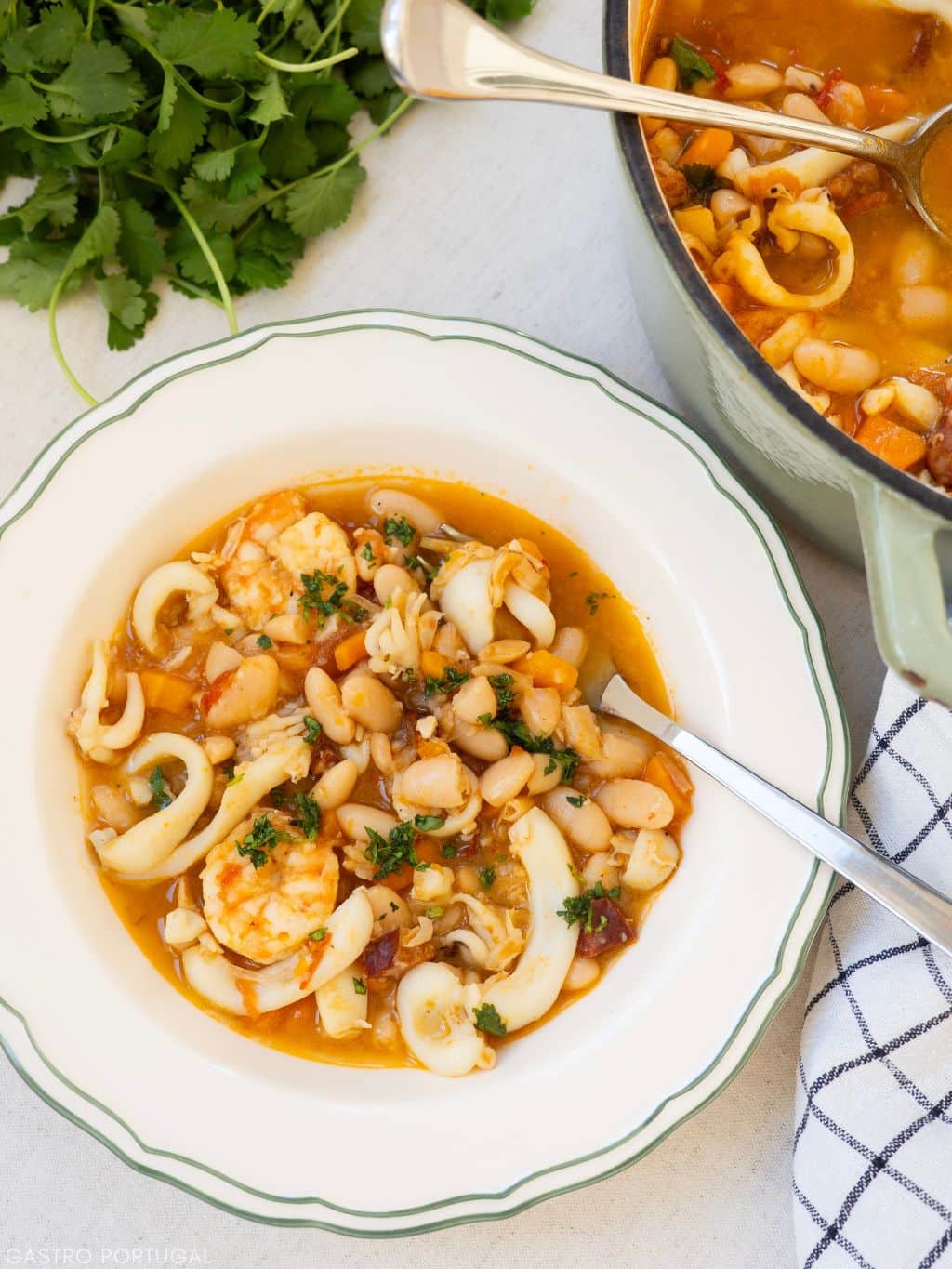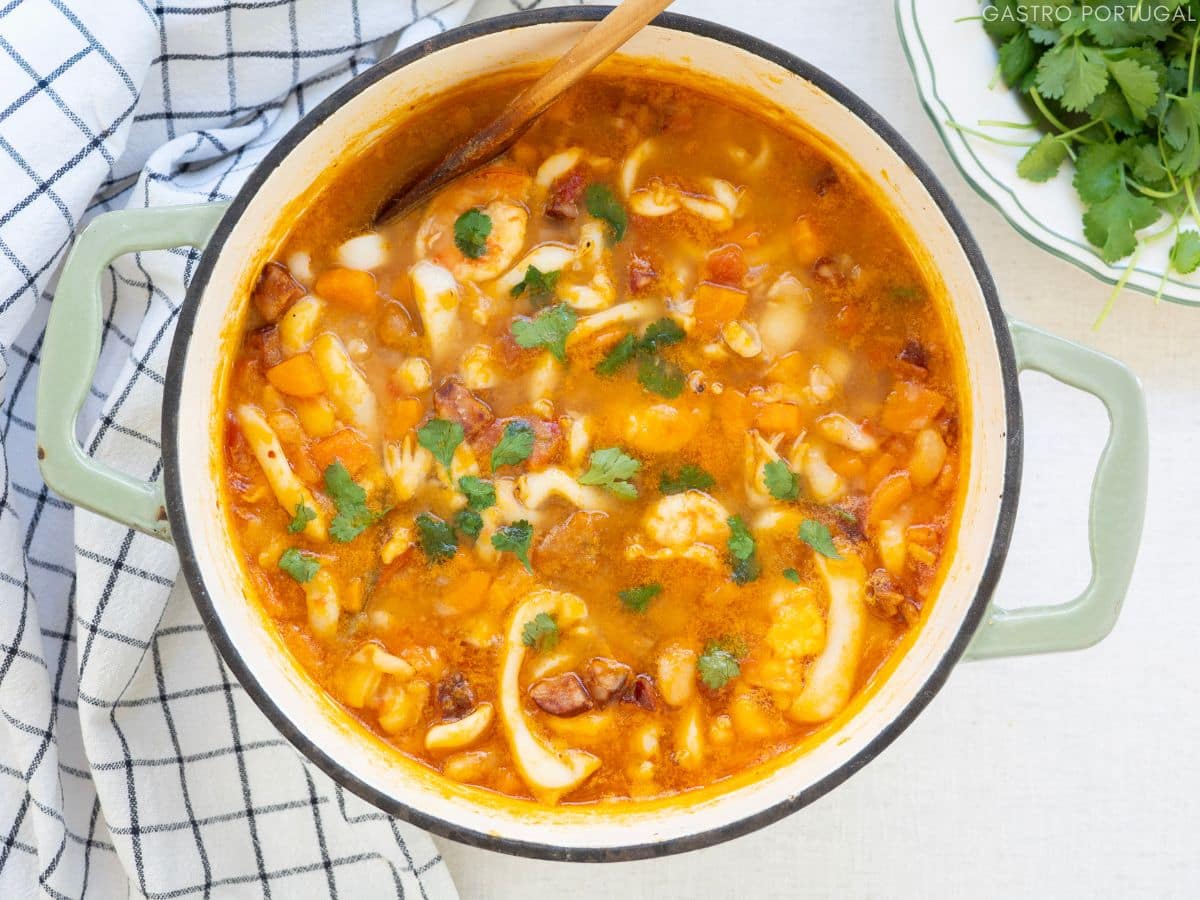Feijoada de Choco is a traditional Portuguese stew that combines cuttlefish and navy beans. It’s a variation of the Classic Portuguese Feijoada made with pork and cured sausages. Feijoada de Choco is absolutely delicious, and a dish I always make whenever I’m craving a heartier seafood dish. Keep on reading to learn how to make this authentic Portuguese Cuttlefish and Bean Stew!
Feijoada – A Bean Stew that Originated in Portugal
Most people know ‘feijoada’ as Brazil’s national dish – a hearty stew made with black beans and a mix of pork, beef, and different sausages. This distinctive dish is in fact Brazilian, the practice of stewing meat and beans together, however, is as old as time! It can be traced all the way to the Roman Period, and in Europe alone you will find several stews mixing some type of meat with some type of beans. In Portugal there are dozens, all falling under the broad term ‘feijoada’ – quite simply a bean stew. Differently to Brazil, the name is not tied to a single dish but to almost any bean stew.

Cuttlefish Bean Stew – A Twist of the Traditional Portuguese Feijoada
The most popular or the classic feijoada combines three types of Portuguese sausages, salted pork meats, bacon, carrots, onions, garlic, chopped tomatoes, cabbage, and of course, beans. This is what I like to call a Classic Portuguese feijoada. Some people prefer the term ‘Portuguese-style Feijoada’ to differentiate it from the Brazilian feijoada or just feijoada as it’s called in Brazil.
The Cuttlefish Feijoada has a similar base of that of a classic one. You will need the same aromatics. The pork meat and cured sausages, though, are swapped for cuttlefish and sometimes shrimp too, with exception of the chouriço which adds a delicious smokey flavour to this cuttlefish and bean stew. Another key difference is the type of beans used, while in the meat feijoada the varieties used are pinto or kidney, in the cuttlefish feijoada navy beans are preferred.

Choco vs Choquinho – Choosing your Cuttlefish
Cuttlefish is highly appreciated and featured in several dishes across coastal Portugal. In Setúbal you have Choco à Setubalense – strips of cuttlefish breaded and deep fried often enjoyed as a snack or main, when served with tomato rice and fries. In the Algarve, Choquinhos à Algarvia – sautéed cuttlefish served with a butter, garlic and white wine sauce.
If you’re buying your cuttlefish in Portugal, you’ll likely come across two types of cuttlefish, choco and choquinho. So, what’s the difference between the two? They are the exact same species of shellfish at different life stages, choco is the adult animal while choquinhhos are baby cuttlefish. Both are available at most fishmongers in Portugal with peak season happening between late spring and summer. Both choco and choquinho can be used in feijoada, and you can ask your fish monger to prep it specifically for this dish. You can also purchase frozen cuttlefish ready for consumption from most Portuguese supermarkets as it’s an easier way to guarantee the texture turns out right!

How to Make Authentic Portuguese Cuttlefish Bean Stew
Feijoada de Choco is a lighter version of the classic Portuguese feijoada. It combines cuttlefish, navy beans, and aromatics.

Have you tried this recipe? Let me know in the comments!
More Traditional Portuguese Dishes You Will Love!
- Caldeirada de Peixe – Traditional Portuguese Fish Stew
- Jardineira – Portuguese Gardener’s Beef Stew
- Arroz de Feijão – Portuguese Bean Rice
- Borrego Assado com Batatas – Roast Lamb with Potatoes
- Carne de Porco à Alentejana – Portuguese Pork and Clams
- Feijoada – How to Make Portuguese Meat and Bean Stew
